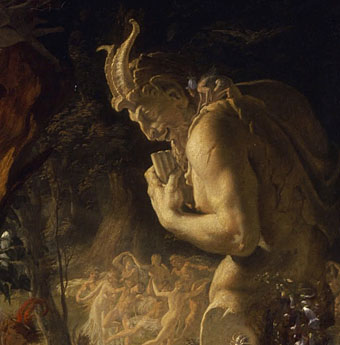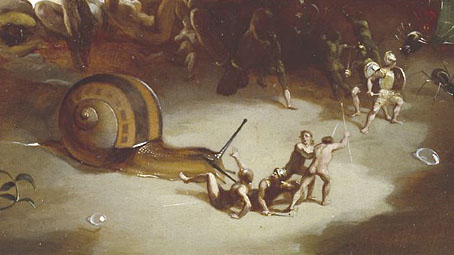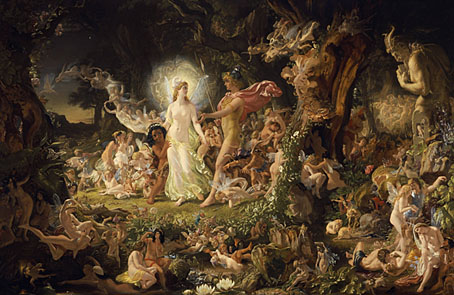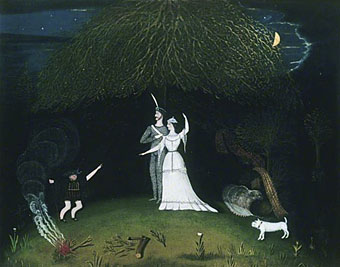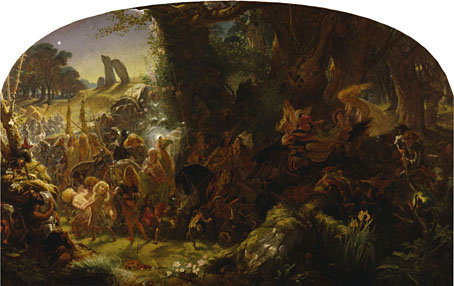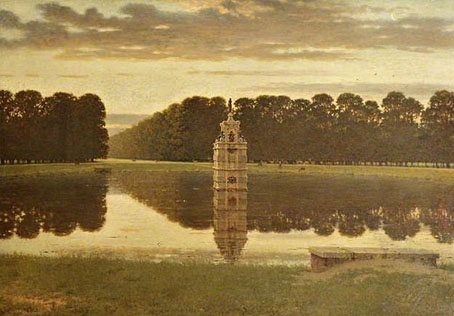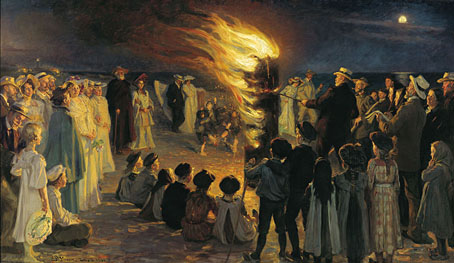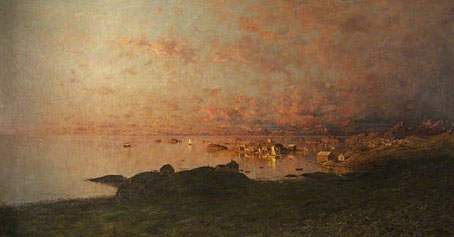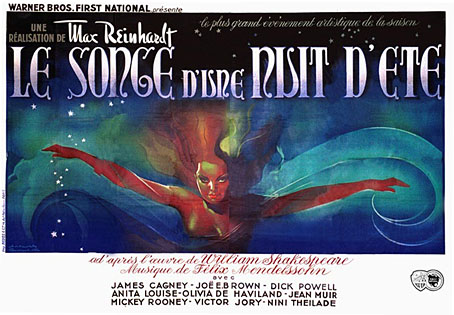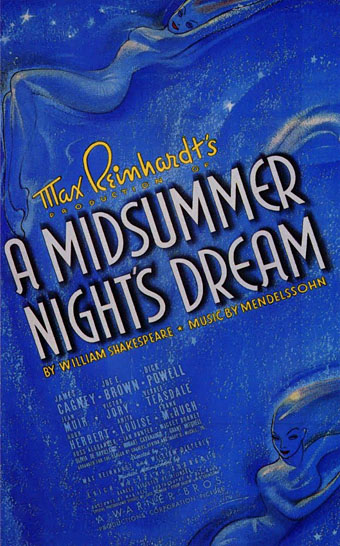A statue of the Great God Pan looks down on the teeming chaos of Joseph Noel Paton’s The Quarrel of Oberon and Titania (1849), one of many 19th-century paintings based on A Midsummer Night’s Dream. Paton’s canvas gives Richard Dadd a run for his money in its wealth of incident and grotesque detail (see the big version at Wikipedia), and the artist returned to the theme a few years later with the equally excessive Fairy Raid (below). The later painting presumably depicts the kidnapping of the Changeling which Oberon and Titania quarrel over.
While we’re on the subject, a couple of years ago I wanted to link to the amazing fairy scene in William Dieterle’s 1935 film (which supposedly features Kenneth Anger as the Changeling) but it wasn’t on YouTube. Now you can watch it here.
The Midsummer Night’s Fairies (detail, 1847) by Robert Huskisson.
The Quarrel of Oberon and Titania (1849) by Joseph Noel Paton.
A Midsummer Night’s Dream (c. 1860) by W. Balls.
The Fairy Raid: Carrying Off a Changeling, Midsummer Eve (1867) by Joseph Noel Paton.
Midsummer Morn, Bushy Park (1905) by George Dunlop Leslie.
Midsummer’s Eve Bonfire on Skagen’s Beach (1906) by PS Krøyer.
Midsummer Night, Lofoten, Norway (no date) by Adelsteen Normann.
Previously on { feuilleton }
• Max Reinhardt’s Dream
• The Midsummer Chronophage
• Another Midsummer Night
• A Midsummer Night’s Dadd
• William Heath Robinson’s Midsummer Night’s Dream

